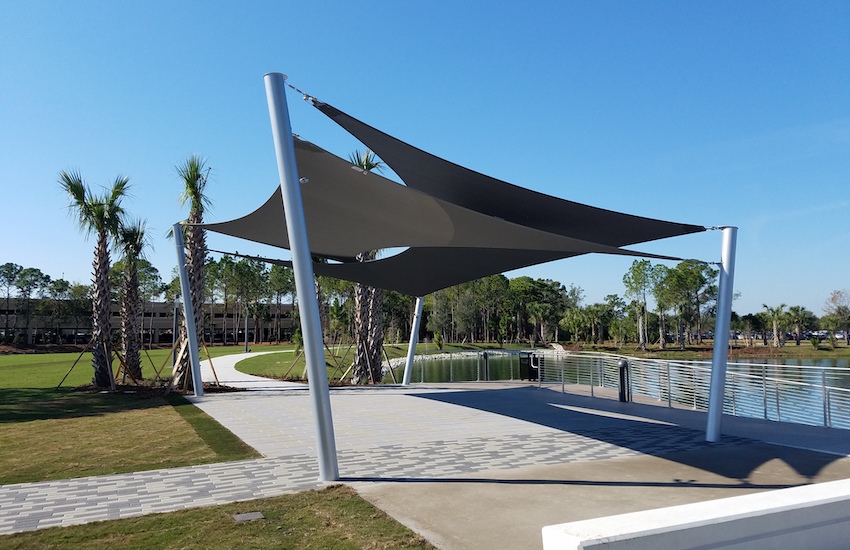Revamp The Area: The Craft of Sail Shade Creation
Regarding improving your outdoor living spaces, shade sails offer a special solution that fuses functionality with aesthetic appeal. These flexible structures are not merely a way to protect against the sun; they are an art form that can completely revolutionize the look and feel of your property. With a variety of designs, shades, and sizes available, shade sails allow you to showcase your personal style while creating a pleasant environment for rest and socializing.
Envision hosting gatherings under a beautifully designed shade sail that adds a dash of sophistication to your garden, patio, or outdoor space. Not only do such structures provide important protection from harmful UV rays, but they also create dynamic outdoor spaces that can be enjoyed throughout the year. Whether you want to create a cozy nook for curling up with a book, an appealing area for eating, or an open space for activities, such canopies can quickly adjust to meet your needs and enhance your outdoors like never seen before.
Deciding on the Best Material
When it comes to choosing shade sails, the material is a crucial factor that affects longevity, appearance, and functionality. Common materials used for shade sails include high-density polyethylene and tensile fabric, both providing different benefits. High-density polyethylene is known for its outstanding UV resistance and breathability, making it ideal for outdoor environments. On the other hand, tensile fabric is highly durable and provides a sleek, modern look, perfect for modern designs.
An additional important consideration is the mass and thickness of the fabric. More substantial materials provide higher sun protection and are typically more resistant to tearing and fading. However, they can also be heavier, which may affect installation. Balancing weight with protection will help you discover the right fit for your needs. Additionally, think about the flexibility of the material. Some options allow for various colors and patterns, letting you create a unique and personalized outdoor space.
Lastly, think about the sustainability of the material you choose. Look for options that are environmentally friendly, such as recycled fabrics or those produced using sustainable practices. This not only enhances the appeal of your space but also matches eco-conscious living. By choosing the right material, you can make sure that your shade sails not only enhance your home but also contribute positively to the environment.
Design Considerations
When you planning the installation of sail shades, it is important to think about the particular arrangement of your outdoor space. Take into account the measurements and shape of the area, as well as existing features such as foliage, homes, or decks. These components will affect the size and arrangement of the sail shades, enabling you to enhance protection and visual appeal. A carefully considered layout ensures that the sails provide shade but also improve the total usefulness of your outdoor living space.
A further critical factor to keep in mind is the position of the space in relation to the trajectory of the sun. Grasping how sunlight travels throughout the day will help you determine the optimal angles and positions for your sail shades. This strategic placement can significantly boost sun protection and temperature control in your outdoor space. Furthermore, think about how the placement of the sails will affect breeze and consider using windproof configurations to ensure strength.
Color and material selection are also crucial components of shade sail design. These factors not only contribute to the visual harmony of your space but also impact how well the sails function. Select materials that offer UV protection and durability, and select colors that complement the existing decor of your home and landscape. A carefully selected shade sail can act as a stunning centerpiece, enhancing the aesthetic appeal of your outdoor area as it effectively offers shade from the sun.
Mounting Guidelines
When installing shade sails , it is essential to select the right location for optimal effect. It is best to, choose an area that gets ample sunlight during the day while also considering the places of nearby trees, buildings, and fences. Ensure the space is large enough to fit the sail, providing for some tension and not placing it too tight to other structures that could block its effectiveness.

Getting ready the installation surface is an additional important step. Make sure the mounting points, whether they are poles, walls, or trees, are sturdy and can hold the weight and tension of the shade sail. You may need to add additional hardware, such as D-rings and carabiners, to secure the sail adequately. Ensure that all components are made from weather-resistant materials to increase the lifespan of your shade sail.
In conclusion, follow the manufacturer's guidelines when it comes to adjusting the sail. A properly tensioned shade sail avoids sagging and flapping, ensuring that it not only is visually appealing but also gives effective shade. Regularly check your installation for any signs of wear and tear, and carry out maintenance as required to ensure your shade sail in good condition over the seasons.